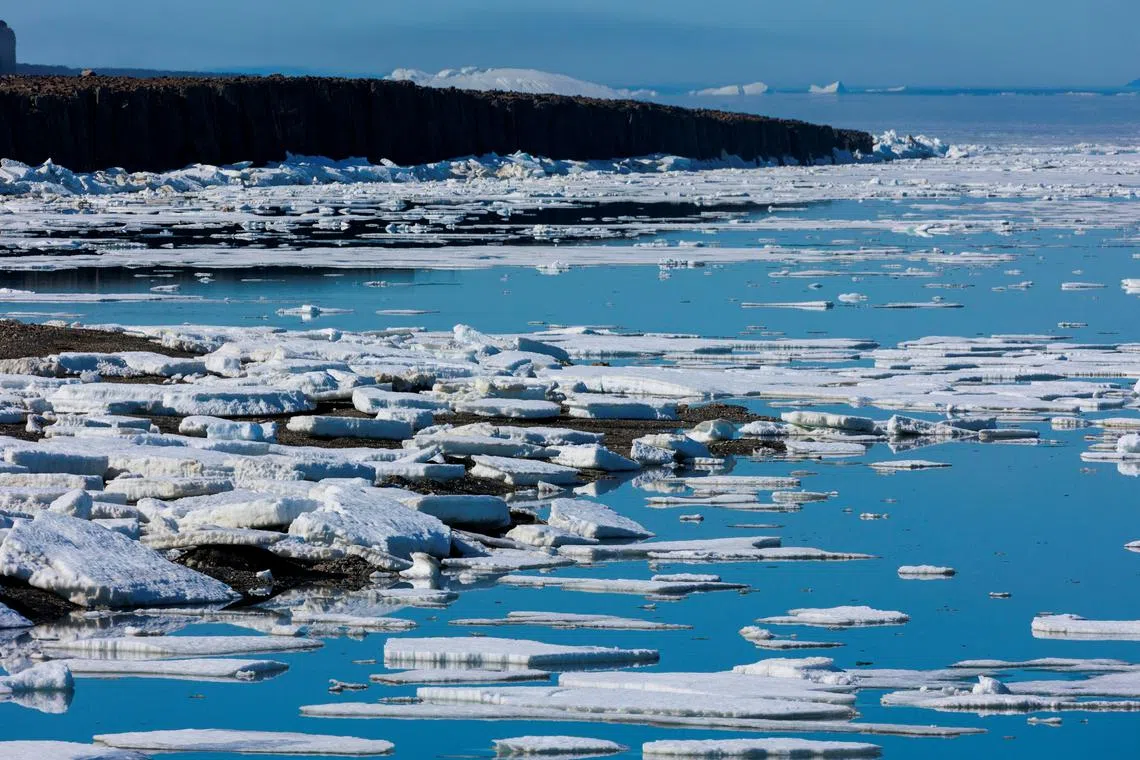Rising seas threaten exodus on ‘biblical’ scale, warns UN’s Guterres
Sign up now: Get ST's newsletters delivered to your inbox

Going forward, the melting of ice sheets in Greenland and Antarctica will become a major driver of sea level rise.
PHOTO: AFP
Follow topic:
UNITED NATIONS - The UN Secretary-General warned on Tuesday that global warming could force a mass exodus “on a biblical scale” as people flee low-lying communities, and called for legal frameworks to be implemented in preparation, especially for refugees.
“The danger is especially acute for nearly 900 million people who live in coastal zones at low elevations – that’s one out of 10 people on earth,” Mr Antonio Guterres told the United Nations Security Council. “Low-lying communities and entire countries could disappear forever... We would witness a mass exodus of entire populations on a biblical scale.”
It is not only small island states at risk as sea levels rise, he added.
Countries such as Bangladesh, China, India and the Netherlands are all in danger, Mr Guterres said, while “mega-cities on every continent will face serious impacts” – from Cairo to Jakarta to Los Angeles to Copenhagen.
The UN’s Intergovernmental Panel on Climate Change (IPCC) says sea levels rose by 15cm to 25cm between 1900 and 2018.
“But every fraction of a degree counts. If temperatures rise by 2 deg C, that level rise could double, with further temperature increases bringing exponential sea level increases,” Mr Guterres said.
The World Meterological Organisation (WMO) said on Tuesday that global average sea levels have risen faster since 1900 than over any preceding century in the last 3,000 years. The global ocean has also warmed faster over the past century than at any time in the past 11,000 years, it said.
The rate of sea-level rise depends on global action to cut emissions. The average rate of sea-level rise was 1.3mm per year between 1901 and 1971, increasing to 4.5mm a year during 2013-2022.
Sea-level rise is driven in part by warming seas – water expands as it gets hotter – and melting glaciers and ice caps.
Going forward, the melting of ice sheets in Greenland and Antarctica will become a major driver of sea-level rise.
The WMO said that over the next 2,000 years, global mean sea level will rise by about 2m to 3m if warming is limited to 1.5 deg C; 2m to 6m if limited to 2 deg C; and 19m to 22m with 5 deg C of warming.
And it will continue to rise over millennia. In the extreme case of humanity doing nothing to control rising greenhouse gas emissions, there is a risk of sea-level rise of 2m by 2100 and even 15m by 2300, the WMO said.
The problem must be addressed “across legal and human rights frameworks”, Mr Guterres warned.
Rising sea levels means shrinking land mass, he said, which could drive possible disputes over land and maritime space.
“The current legal regime must look to the future and address any gaps in existing frameworks,” including in international refugee law, Mr Guterres said.
It must also provide for the future of states that face losing their land territory completely.
Rising sea levels combined with a deep intrusion of saltwater will make large parts of the Indus, Ganges and Brahmaputra deltas uninhabitable, Mr Guterres said.
“We see similar threats in the Mekong Delta and beyond. The consequences of all of this are unthinkable. Low-lying communities and entire countries could disappear forever.“
Mr Guterres said the Security Council has a “critical” role to play in addressing “the devastating security challenges arising from rising seas”. AFP

